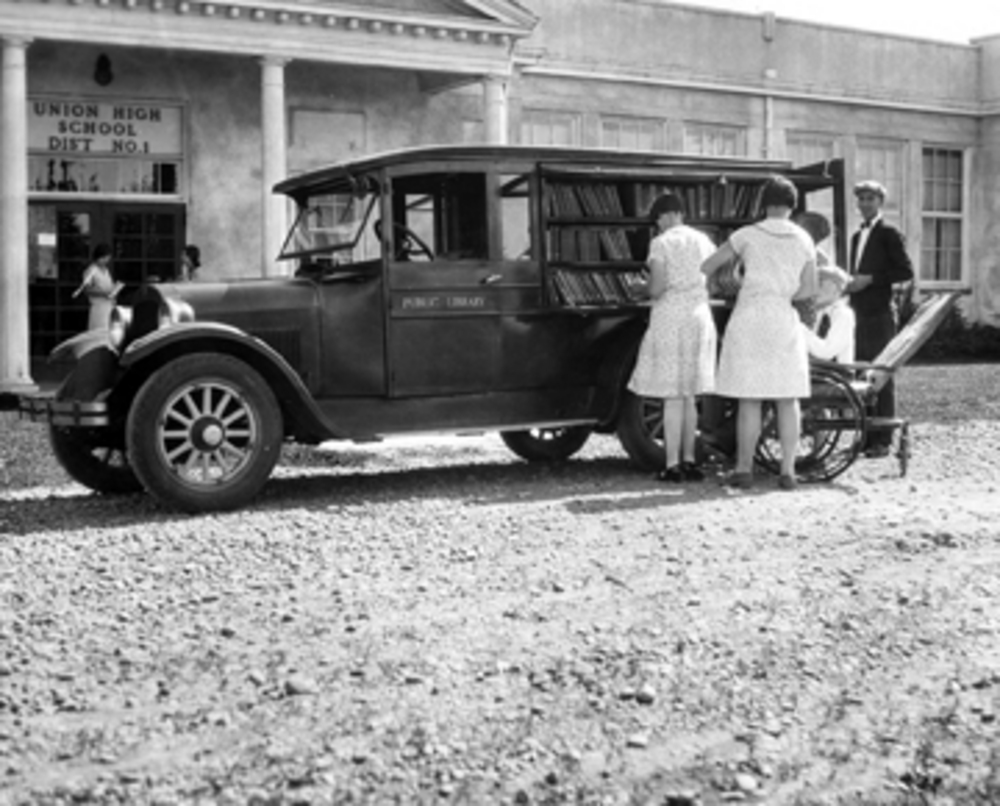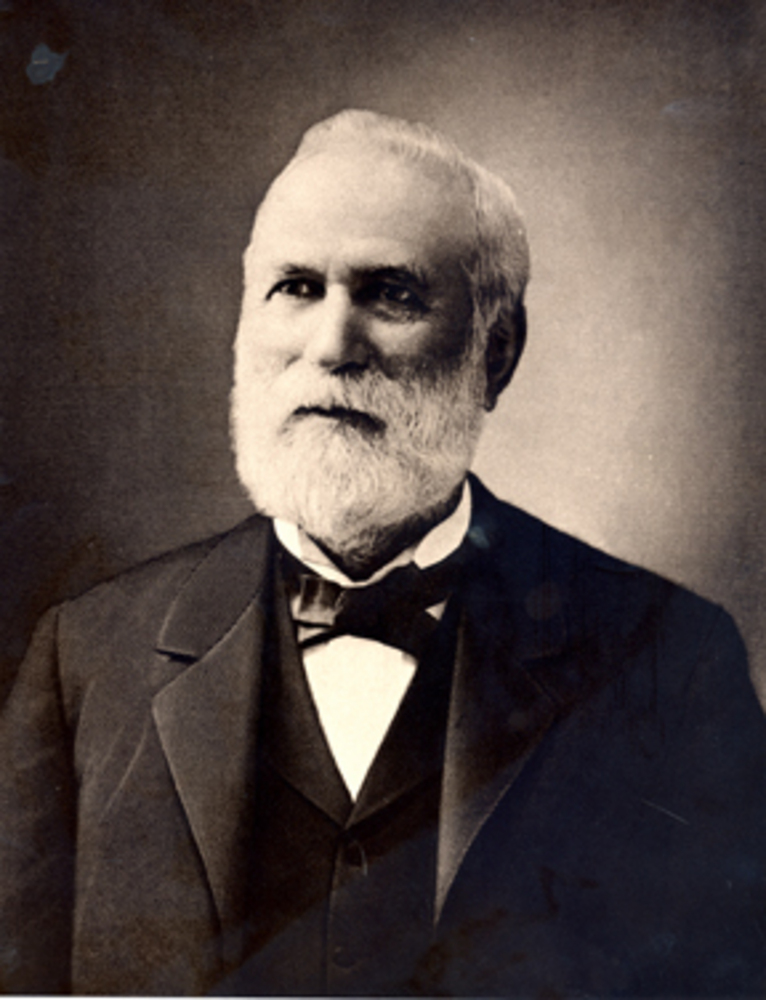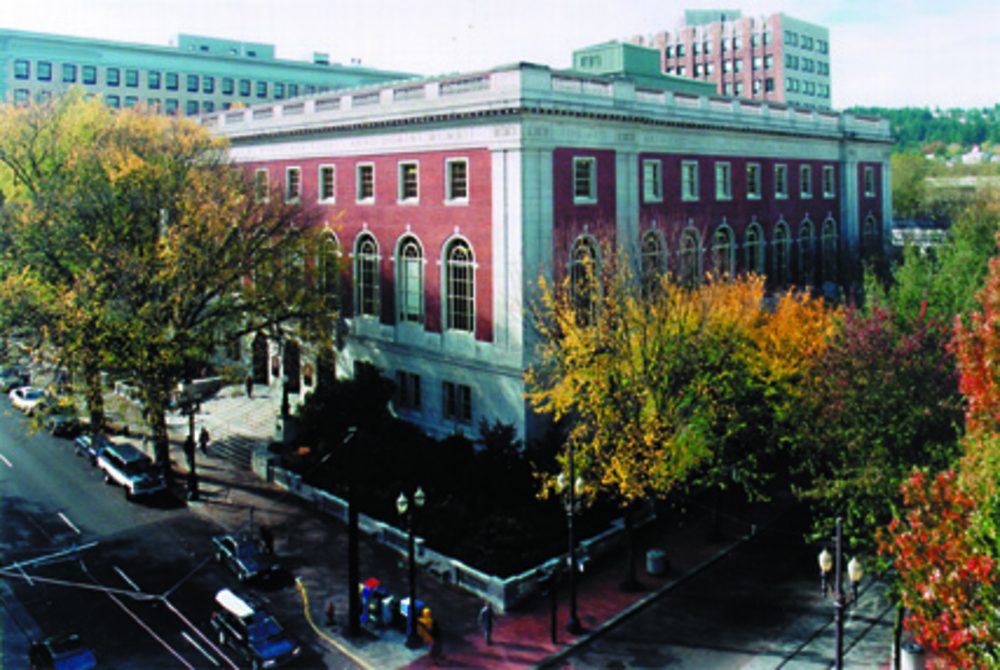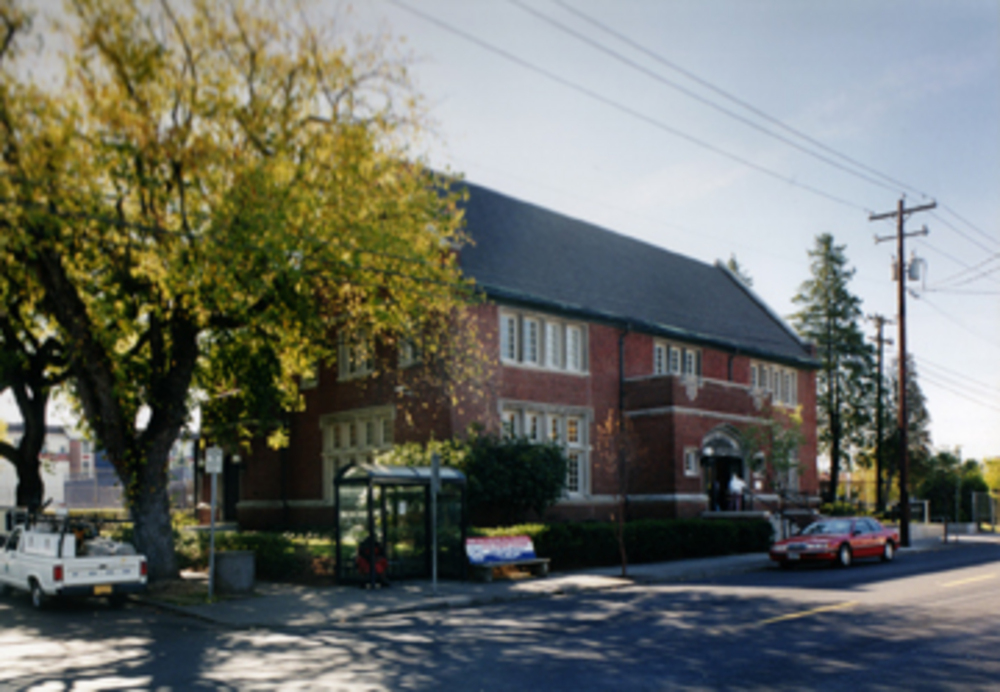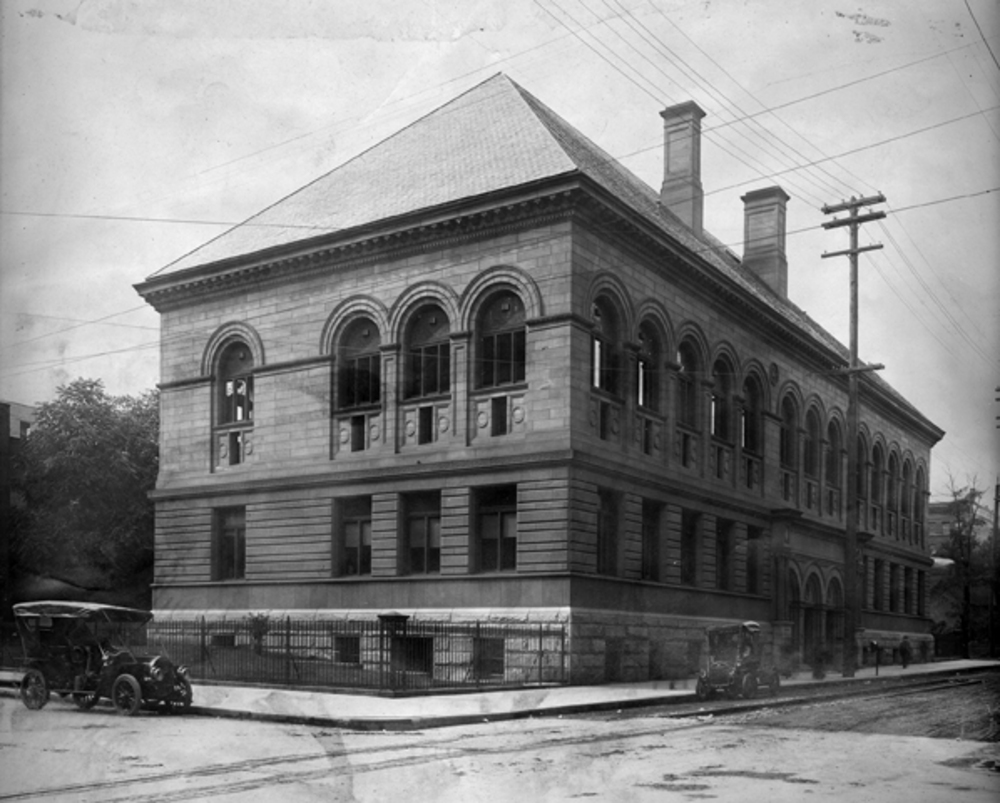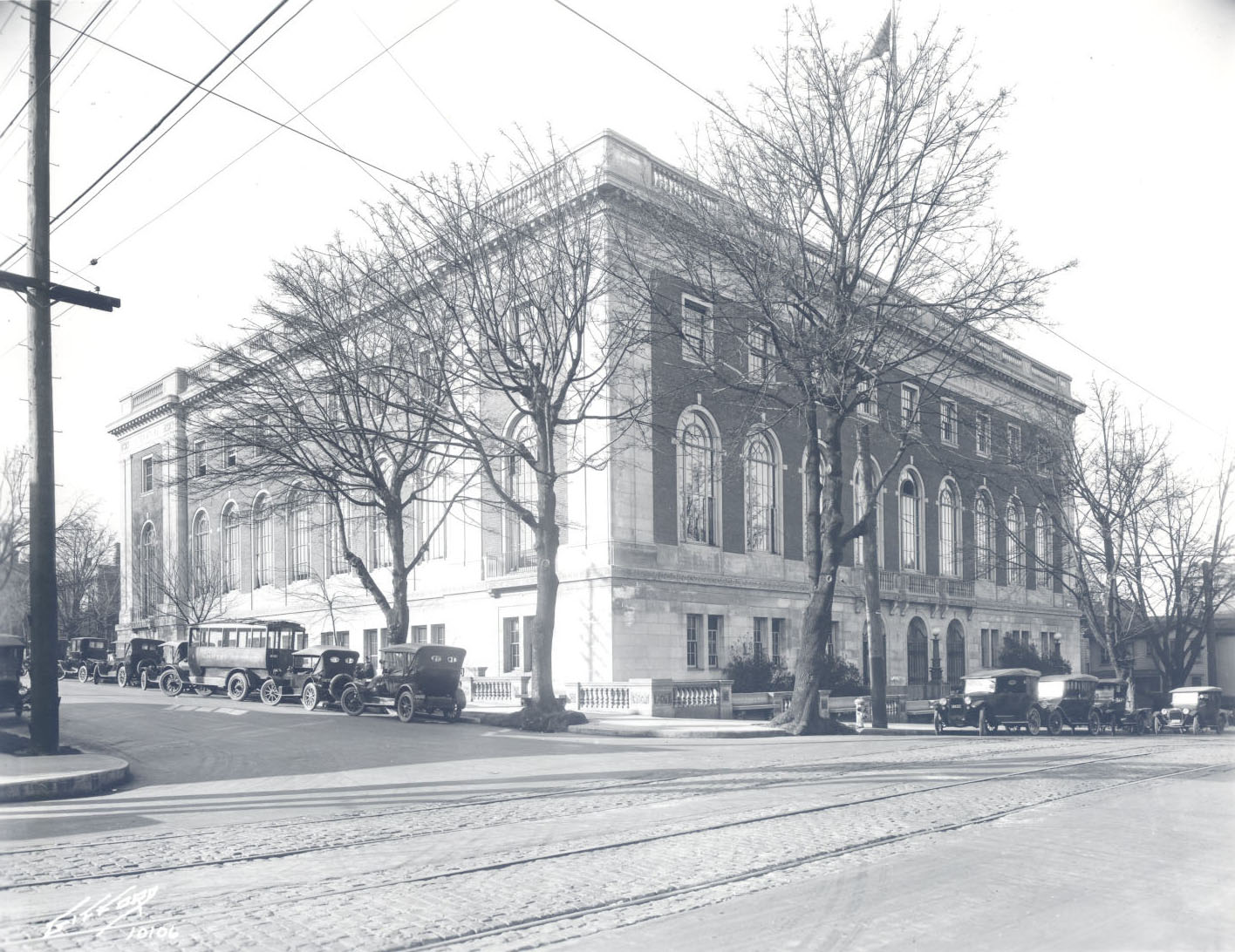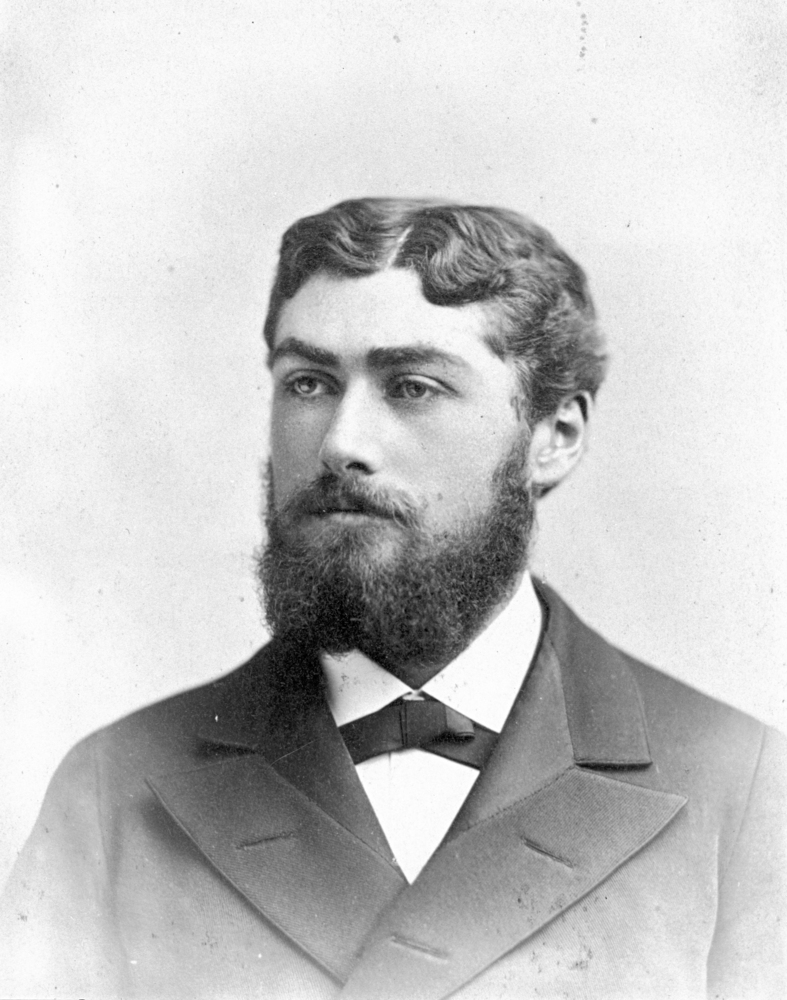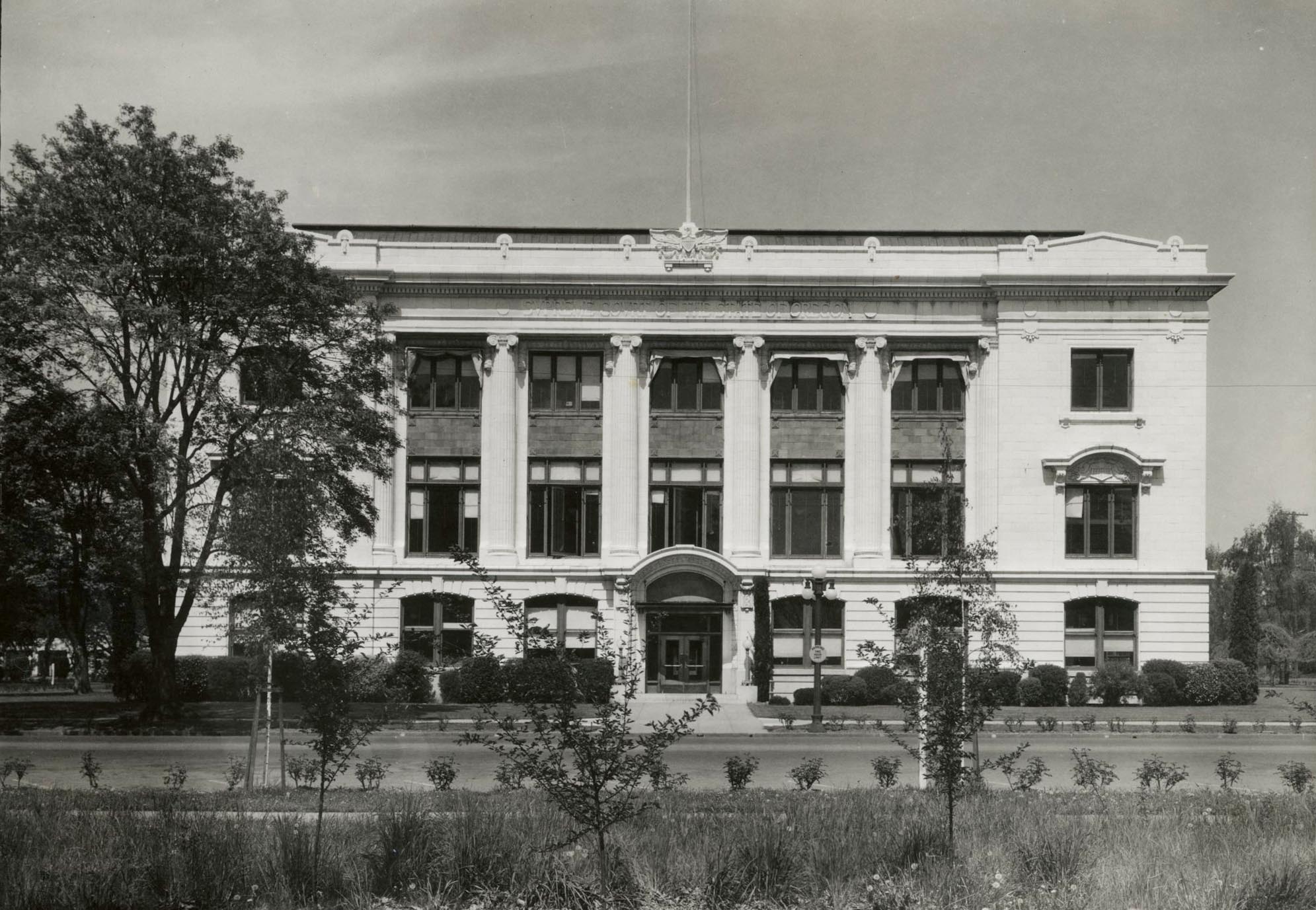The first public library in Oregon, supported by taxes and freely available to everyone, opened in Portland in 1902. While most American cities and towns started from nothing or built on small libraries operated by volunteers, the situation in Portland was very different. The city used public funds to open the doors of the Library Association of Portland (LAP), an existing private subscription library with its own building, staff, and fine collection, which had formerly been accessible only to members.
The LAP, founded in 1864, was one of Portland's first cultural institutions, and its founding directors were some of Portland's leading citizens: banker William S. Ladd; deputy county clerk William S. Caldwell; attorney William Strong; circuit judge Erasmus Shattuck; druggist Philip Schuyler; and merchants Leland Wakefield, Henry W. Corbett, Henry Failing, C.H. Lewis, and Bernard Goldsmith. The directors initially envisioned a mercantile library, specifically for the use of the business community, but soon decided to pursue a broader mission to serve the general population.
The transition to a free public institution began with a major bequest in September 1900 from pioneer merchant John Wilson, who left his collection of nearly 9,000 books to the LAP with the condition that it be made freely available to the public. Some members of the LAP board had argued for years that the library should be made free rather than requiring membership. Wilson's bequest broadened board support.
Oregon women's clubs had long lobbied for the passage of a law that would enable incorporated cities to levy taxes to establish and support free libraries. Once the LAP board agreedto support the effort, the law was passed quickly and approved by the legislature in February 1901, just a few months after the Wilson bequest.
The library law, "An Act to authorize the establishment and maintenance of public libraries, and to provide for their control and protection," included a provision designed especially for the circumstances in Portland: cities were permitted to enter into contracts with existing private libraries to provide public library services. The provision was broadened in 1903 to include county governments, again with Portland in mind, to expand the tax base and service area to all of Multnomah County. This unusual governance structure persisted until 1990, when the LAP was dissolved and the library became a county department.
Librarian Mary Frances Isom was hired in 1901 to catalog the Wilson collection. She quickly replaced the head librarian and successfully planned and presided over the transformation of the LAP.
As a public institution, the LAP provided substantial resources for the community. Its collection in 1902 was relatively large, over 37,000 volumes. Reaching out to rural areas, the library established deposit stations, introduced bookmobile service, and opened libraries in the county's public schools. It offered the expertise of professional librarians who assisted users with research and advice about reading.
The library's buildings themselves were important public resources, beginning with the LAP's downtown building, a large stone structure erected in 1893. A new central building at Tenth and Yamhill, funded jointly by the LAP and the county, opened in 1913. This monumental building was renovated and restored in the 1990s and is listed on the National Register for Historic Places. It is still occupied by the Central branch of the Multnomah County Library.
The library's branch system benefited from the philanthropy of industrialist Andrew Carnegie. The first three branch libraries were built with a 1911 Carnegie grant of $105,000, and a later $60,000 Carnegie grant funded additional branches. All of these buildings were public spaces open to everyone, with reading rooms, meeting rooms, lecture halls, and restrooms.
In 1990, governance for the library was transferred from the Library Association of Portland to Multnomah County and the Multnomah County Board of Commissioners. As of 2018, the Multnomah County Library system supports nineteen locations, with millions of items available for public use.
-
![Bookmobile of the Library Association of Portland, 1928.]()
Library Assoc. Portland, bookmobile, 1928.
Bookmobile of the Library Association of Portland, 1928. Courtesy Multnomah County Lib.
-
![Mary Frances Isom.]()
Isom, Mary Frances.
Mary Frances Isom. Courtesy Multnomah County Lib.
-
![John Wilson.]()
Wilson, John.
John Wilson. Courtesy Multnomah County Lib.
-
![Central Library, Portland, at 801 S.W. 10th St.]()
Central Library, Portland.
Central Library, Portland, at 801 S.W. 10th St. Courtesy Multnomah County Lib.
-
![North Portland Library, a Carnegie library building at 512 N. Killingsworth St.]()
North Portland Library.
North Portland Library, a Carnegie library building at 512 N. Killingsworth St. Courtesy Multnomah County Lib.
-
![The Stark Street Library preceded the current Central Library building.]()
Stark Street Library.
The Stark Street Library preceded the current Central Library building. Courtesy Multnomah County Lib.
Related Entries
-
![Carnegie Libraries in Oregon]()
Carnegie Libraries in Oregon
Of the 1,679 public library buildings funded in the United States by An…
-
![Central Library (Multnomah County Library)]()
Central Library (Multnomah County Library)
Central Library, the largest building in the Multnomah County Library s…
-
![C.E.S. Wood (1852-1944)]()
C.E.S. Wood (1852-1944)
C.E.S. Wood may have been the most influential cultural figure in Portl…
-
![Mary Frances Isom (1865-1920)]()
Mary Frances Isom (1865-1920)
Mary Frances Isom, perhaps Oregon's most remarkable librarian, transfor…
-
![Matthew Deady (1824-1893)]()
Matthew Deady (1824-1893)
Matthew Paul Deady was a lawyer, politician, and judge in the Oregon Te…
-
![Oregon Territorial Library]()
Oregon Territorial Library
The Oregon Territorial Library was the first publicly funded library in…
Related Historical Records
Map This on the Oregon History WayFinder
The Oregon History Wayfinder is an interactive map that identifies significant places, people, and events in Oregon history.
Further Reading
Anderson, Katherine E. Historical Sketch of the Library Association of Portland. Portland, Ore.: Library Association of Portland, 1964.
Gunselman, Cheryl. "Pioneering Free Library Service for the City, 1864-1902: The Library Association of Portland and the Portland Public Library." Oregon Historical Quarterly 103:3 (Fall 2002): 325.
Ritz, Richard E. Central Library: Portland's Crown Jewel. Portland, Ore.: Library Foundation, 2000.

